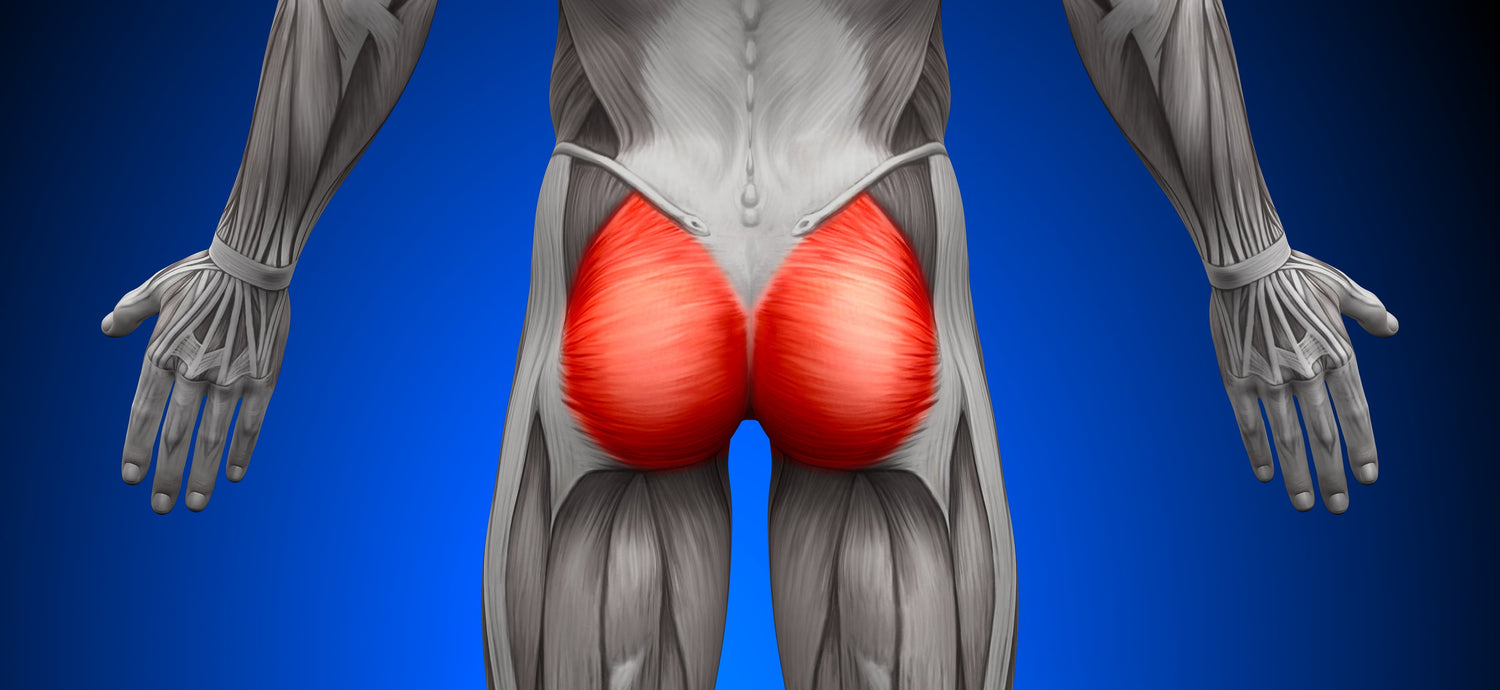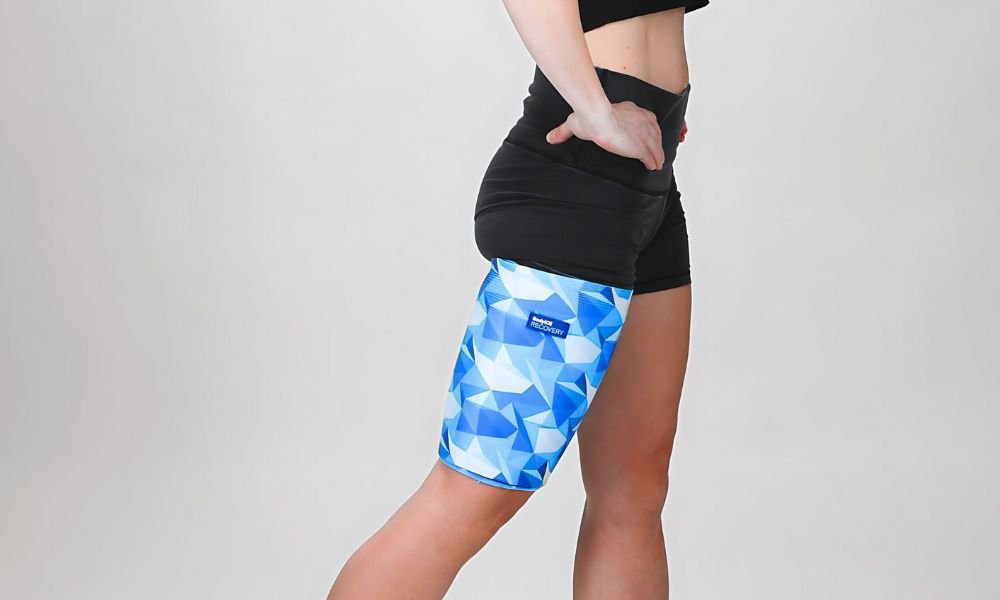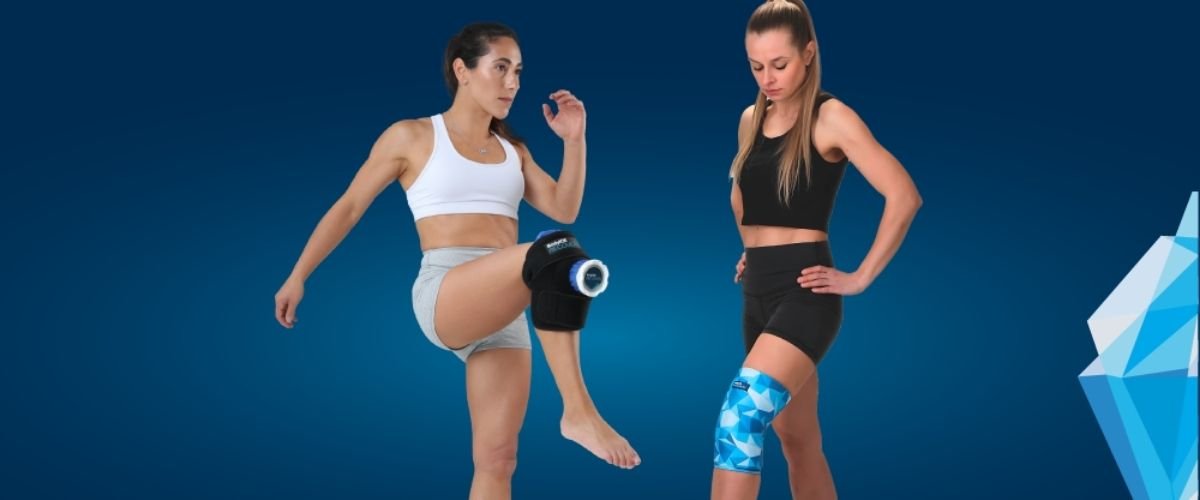What we commonly refer to as our 'glutes' (or our butt) is actually the gluteal muscles, a group of 3 muscles that make up the buttocks. They are the gluteus maximus, gluteus medius and gluteus minimus. These are some of the most important (and least understood) muscles in the body. Whilst many people desire to have toned and shapely glutes for aesthetic reasons, they also serve a much greater purpose.
These muscles, as a group, are one of the strongest areas in the body and are instrumental in movements involving the hips and thighs. Standing up, sitting down and simply standing up straight are all functions of the glutes. Without the glutes, these activities would be extremely difficult if not impossible.
Many of us take our glutes for granted, but having weak glutes can cause more problems than people realise.
Not activating this area correctly during exercise can lead to muscle imbalances and eventually a chain reaction of health issues. Here are a few surprising health problems that may occur:
Poor posture -If a person has weak glutes it can cause the hips to tilt slightly forward. If not corrected, this anterior pelvic tilt can lead to a myriad of other lower body injuries.
Low back pain -This can be caused by incorrect lifting technique, as the glutes and lower back muscles work together to help stabilise the back when lifting objects.
Hip and knee issues - Weak glutes can increase the pressure on the many joints including hips, and knees. This knock-on effect is due to a higher amount of internal rotation on the femur (thigh bone).
Hamstring strains - If the hamstrings become dominant during hip extensions, it increases the risk of hamstring strains.
Other injuries- A study in the Journal of Orthopedic & Sports Physical Therapy found that the muscle imbalances caused by gluteal muscle weakness have been associated with several lower extremity injuries including patella femoral pain syndrome, iliotibial band friction syndrome, anterior cruciate ligament (ACL) sprains, and chronic ankle instability.
Upper body issues- In addition to posture issues in the lower body, weak glutes can affect the upper body as well. Because the hips are tilted forward, the stabiliser muscles must work harder to keep the body straight. This can increase risk of headaches as well as pain in the shoulders and neck.
Diminished sports performance- Strong glutes muscles are essential for sports performance. Explosive movements used in exercises such as basketball, volleyball, soccer, football, and running all require a strong backside!
How Strong Are Your Glutes?
You may have weak glutes and not even know it! Try these two exercises to test your glute strength:
Exercise #1 (The Chair of Death)
- Stand in front of a chair
- Place your feet under the chair, allowing knees to touch the seat
- Extend your arms in front of you
- Exhale and bend your knees and squat as if going to sit down
If your knees hit the chair, your glutes are not functioning correctly and need to be strengthened.
Exercise #2 Single Leg Glute Bridge
- Lie on the floor with your knees bent,
- Plant your feet hip-width apart
- Place your arms underneath your body for stability
- Exhale and slowly lift your hips off floor towards ceiling into a full bridge position
- Inhale at the top of the movement
- Exhale and extend your left leg out towards opposite wall
- Inhale and lower
- Repeat with right leg
If your hips sway from side to side while lifting legs, this indicates weakness in the glutes, hip abductor and rotator muscles.
Top Exercises for Glute Strength
Many fitness routines don't activate our gluteal muscle correctly and this should be made a top priority. Here are the best exercises to strengthen your peach!
- Hip Thrust
- Lie on floor in as if doing Bridge exercise (as described previously)
- Exhale and raise hips off ground towards ceiling
- Hold for 3 seconds
- Exhale and lower
- Repeat 15x
Note:
- This exercise can be performed with one leg planted and the other raised off the ground to target the glutes individually.
- Hip Hinge
- Stand with feet hip-width apart
- Keep knees slightly bent
- Exhale and push hamstrings and hips backwards as if closing door with your glutes
- Inhale and slowly return to starting position
- Squeeze at top
- Repeat 20x
Note:
- This movement is the foundation for all lower-body exercises
- Walking Lunges
- Stand with arms at sides
- Exhale and take a step forward with right foot
- In one fluid motion, lower body at knees into lunge position
- Inhale and straighten legs and walk left foot forward
- Repeat for 10 steps
Notes:
- The deeper the lunge, the more the glutes are activated.
- Keep upper body straight while in the lunge position.
- Look straight ahead to avoid leaning forward.
- This exercise can be performed with dumbbells, a barbell, or just bodyweight.
- Do not perform this exercise if experiencing knee or back pain.
- Single Leg Deadlift
- Stand with feet shoulder-width apart
- Start with left foot slightly in front of your body, knees slightly bent
- Hold light dumbbells in front of hips
- Exhale and raise right leg behind you, keeping it straight
- Keeping arms and back straight, slowly bend forward, until torso is parallel to the floor
- Inhale and slowly return to starting position
- Repeat 10x each leg
Notes:
- Looking forward throughout the movement will help keep your back straight
- Perform this movement slowly to maintain balance
- Kettlebell Swing
- Stand with feet shoulder-width apart
- Grab a kettlebell with both hands using an overhand grip
- Squat then thrust hip upwards and raise arms to shoulder level in one fluid motion.
- Repeat 20 times
Notes:
- Keep your movements controlled.
- This exercise activates the fast-twitch muscle fibers.
- It can be performed with a kettlebell or dumbbell.
- Squats
- Stand with feet shoulder-width apart
- Looking forward, exhale and lower body until thighs are parallel to the floor
- Inhale and slowly rise to starting position
- Repeat 10-15 times
Notes:
- Squats can be performed with a barbell, dumbbells or bodyweight.
- Do not perform this exercise if experiencing knee or back pain.
- Keep the movement slow and controlled.
- To avoid straining the lower back, look forward to keep your back straight.
The glutes play an integral part in our overall health. Make an effort to exercise your glutes on a consistent basis. Your body will thank you.
For more tips on exercise, recovery and healthy recipes, check out our blog.






Leave a comment
All comments are moderated before being published.
This site is protected by hCaptcha and the hCaptcha Privacy Policy and Terms of Service apply.